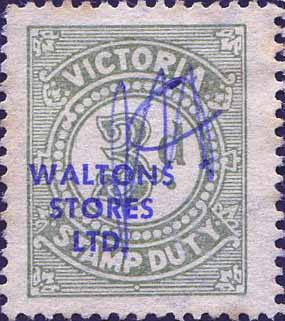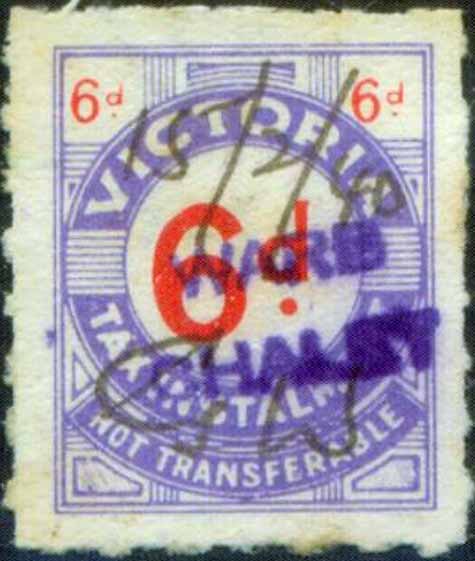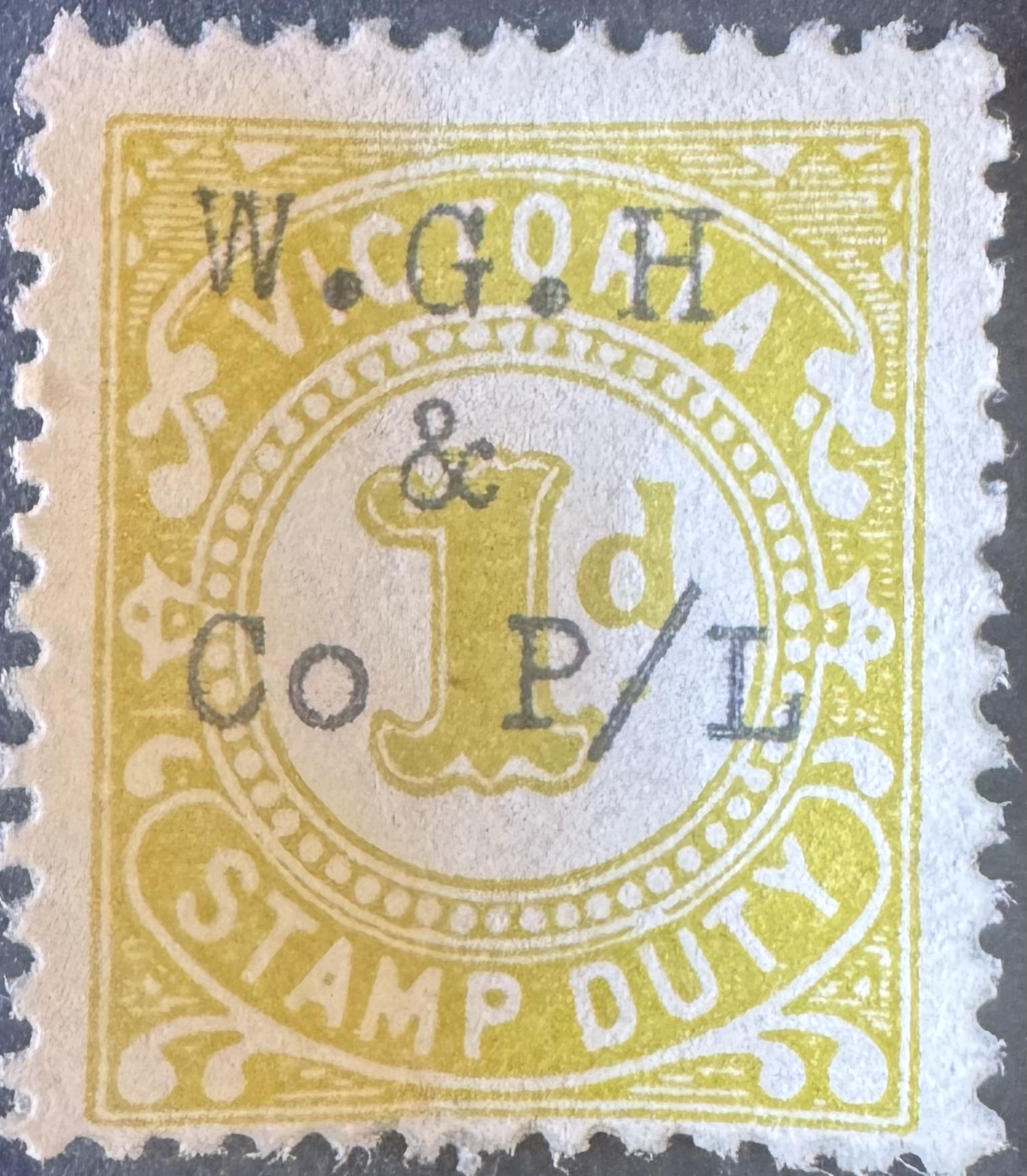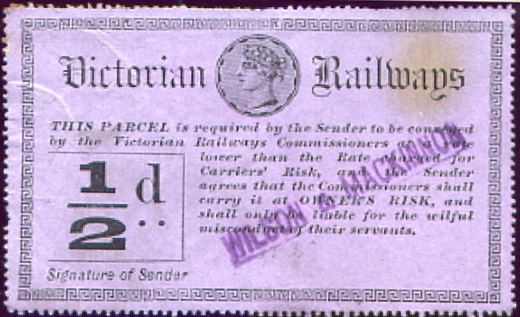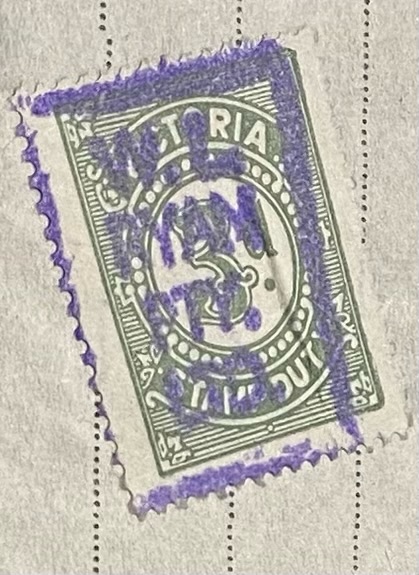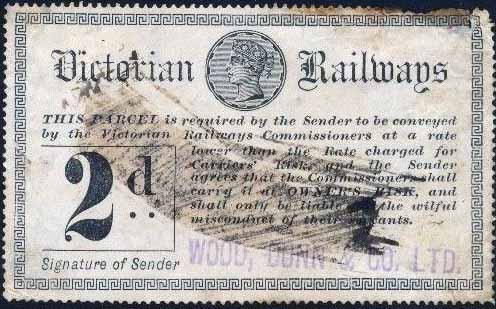|
Private Revenue Perfins of Victoria An Elsmore Coath Howard production The authors would welcome your comments additions or input into this work A B C D E F G H I J K L M N O P Q R S T U V W Y Back to Victoria 'Other' page Back to States Perfin index Back to Commercial Overprint index Section 2 - Commercial Overprints W -------------------------------------------------------- WALTONS/STORES/LTD..a User: Waltons Stores Ltd Department Stores Address: Burke St, Melbourne, VIC Revenue Use: 1932 Series 3d Rarity Scale:
1932 Series 3d R4 Background: *Walton bought a menswear store in 1951, located in George St, Sydney, opposite the Queen Victoria Building and Sydney Town Hall and close to Town Hall railway station. In 1955, he formed an alliance with the American retail giant Sears and Roebuck. In the early 1960s he formed a finance company in partnership with Citibank, and also moved into insurance. With the changes in the retail scene in Australia in the 1960s Waltons Limited bought out Marcus Clark & Co.in 1966, and then took over Anthony Hordern & Sons and merged its country store operation into the Walton's store group. This excluded the famous Brickfield Hill store in the south of Sydney's CBD, which by 1969 had already closed. Next they acquired McDowell's Holding Ltd in 1971, the owners of McDowell's department stores. By 1972, the Waltons chain had expanded to 96 department stores before Walton retired as executive chairman. Sir John severed his ties with the company in 1976, when his son John took over. Waltons Ltd., was sold to Alan Bond during 1981. Sadly for Alan Bond, instead of becoming successful, the purchase of Waltons became a financial disaster, losing $199 million in 1983. The Waltons department store name then disappeared, when Alan Bond sold and split up Waltons in 1987, to interests associated with the Cookes family. The Cookes family then turned the remaining stores into Venture and Norman Ross outlets. Venture later went bankrupt, during 1994. The flagship Waltons department store in George Street, Sydney, was demolished and replaced by the Citibank office tower which includes the Galeries Victoria retail space. The main Melbourne store, in Bourke Street Melbourne was remodeled into a Village Cinema complex which in turn closed in 2006. The Waltons store in Fortitude Valley still has a Brunswick Street Mall store front with signage "Waltons" but with blacked out door glass since the store closed around 1987. The Street entrances or exits to the bottom level which are occupied by Asian novelty product stores still have the words Walton screwed into the wall with the S removed perhaps as a souvenir. Device: Related Patterns: NSW: WALTON STORES LIMITED.a *Wikipedia -------------------------------------------------------- WARB/CHALET.a User: Warb? Chalet Address: St, Melbourne, VIC Revenue Use: 1933 Tax Series 6d Rarity Scale
1933 Tax Series 6d R4 Background: Device: Handstamped Related Patterns:Nil
-------------------------------------------------------- W.G.H.a User: W.G.H Address: St, Melbourne, VIC Revenue Use: 1932 Series 1d Rarity Scale:
1932 Series 1d R4 Background: Device: Handstamped Related Patterns:Nil --------------------------------------------------------
WILSON & MACKINNON..a User: Wilson & Mackinnon Pty Ltd The Argus Newspaper Address: 365 Elizebeth St, Melbourne, VIC Railway Use: 1887 Issue ½d Rarity Scale: ½d R4 Background:
*Lauchlan Mackinnon (1817-1888), pastoralist and
newspaper proprietor, was born on 26 February 1817
at Kilbride, Isle of Skye, Scotland, second son of
John Mackinnon, Presbyterian minister of Strath,
and his wife Ann, daughter of Lauchlan Mackinnon
of Curry. Educated privately and at Broadford
School, Skye, he worked with his uncle, Lauchlan
Mackinnon, a writer to the signet in Glasgow. He
migrated to Van Diemen's Land in 1838 and then to
Sydney whence he overlanded stock to Adelaide for
Campbell & Co. About 1840 he took stock from
Sydney to Port Phillip where he decided to settle.
He took up the Tarrangower run in 1839-41, Ovens
River in 1841 and, with Webster & Co., Mount
Fyans in the Western District in 1841-53 and Mount
Battery in 1858-66. Device: Handstamp Related Patterns: Nil *Australian Dictionary of Biography. J Templeton -------------------------------------------------------- W.L./RYAN/PTY./LTD.a User: W. L. Ryan Address: 590-592 Elizabeth St, Melbourne, VIC Revenue Use: 1932 Series 3d Rarity Scale:
1932 Series 3d R4 Background: Device: Boxed Handstamped Related Patterns:Nil --------------------------------------------------------
WOOD DUNN & CO. LTD..a User: Wood Dunn & Co Ltd Dairy Produce Address: 10 Market St, Melbourne, VIC Railway Use: 1897 Series 2d Rarity Scale:
1897 Series 2d R4 Background: Wood, Dunn & Co. was established by James Wood and James Dunn as “Commission and produce agents for farmers and dairymen” and brokers for farm sales, boasting (despite only appearing in the records in the same year) in late 1886 of a “long and intimate acquaintance with the farming community and their requirements”. The company advertised extensively and often for supplies of butter, in particular, using the same advertisement in all newspapers, year after year.
In February, 1887, the firm of Wood & Co., produce merchants, of 25 King St, became a separate business entity from Wood, Dunn & Co. of 9 Market St, Melbourne, James Wood continuing to be a principal of Wood, Dunn & Co.
The company office of Wood, Dunn & Co. Ltd moved from 24-26 Market St to 8-12 Market St, opposite the warehouse, in July, 1898.
James Wood appears to have been a pioneer of the Victorian butter export trade to England, first visiting England to investigate the prospects in December, 1887. By 1900, Wood, Dunn & Co. was advertising as “Dairy produce and export commission agents, British, Intercolonial and local markets”. The firm built butter factories and creameries in dairying communities such as Thoona (1889), Greta, Tawanga, and Heyfield (1900), where Reginald Varley, “in the employ of Wood, Dunn & Co.” was architect and surveyor. Varley had joined Wood, Dunn & Co. in November, 1896, as a country traveller and later became the company bookkeeper.
By 1904, when relations between dairy producers and the butter marketing companies had reached scandalous proportions, Wood, Dunn & Co. had opened “13 or 14 creameries and factories.”
From March, 1904, the Butter Commission, convened by the Commonwealth government, revealed a sordid tale of corruption involving Wood, Dunn & Company’s use of bribes and secret commissions to rural community dairy secretaries and managers to secure business. Gifts, theatre tickets and other inducements were common practice. Bad butter, stale or old butter was sold under the brand label of the producer, the best butter boxes were sent upstairs in the warehouse to be re-branded with Wood, Dunn & Co. labels.
James Dunn’s brother-in-law, Arthur George Butler Birchall, was used as a dummy director of Country Butter Co. Ltd, while Varley, still the bookkeeper at Wood, Dunn & Co., was also manager of Pasteurised Milk Co. Ltd. Worse was to come when witnesses admitted that there were “occasional burnings of the account books” to dispose of mal-practice.
By mid-1904, both Reginald Varley and James Dunn were “formerly” of Wood, Dunn & Co.” The scandal destroyed Wood, Dunn & Co. which went into liquidation, its assets being sold at auction in 1905. Device: Handstamp Related Patterns: See W in Victoria Perfin Section -------------------------------------------------------- A B C D E F G H I J K L M N O P Q R S T U V W Y Back to Victoria 'Other' page Back to States Perfin index Back to Commercial Overprint index © copyright 2011 |
